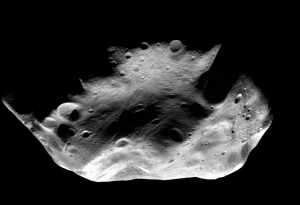London: A potato-shaped asteroid observed by a European space probe last year may be the remnant of an ancient stillborn planet, say scientists.
“This is the first object of this kind we have ever seen,” said Stephane Erard of the Paris Observatory. “For virtually the first time, we have found a witness to the formation of the planets.”

Three studies published in the journal Science reported the outcome of an encounter last year of the asteroid, 21 Lutetia, with Europe’s comet-chasing probe, Rosetta, the Telegraph reported.
The probe turned an array of cameras, thermal and spectroscopic sensors on the 121 km long, 101 km tall and 75 km wide Lutetia as it raced through the asteroid belt between Mars and Jupiter.
It has a complex surface, ridden with craters, including one that measures 55 kms across, where the asteroid was hit by smaller objects as well as shafts, crests and escarpments and smooth, younger-looking plains.
Lutetia’s high density, at 3,400 kilos per cubic metre, its large size and its ancient surface make it unlike any other asteroid probed so far, the studies said.
Erard, the study co-author, said it was likely to be a planetesimal, a bit of the material that clumped together to make the planets at the birth of the Solar System nearly four billion years ago.
“We believe that Lutetia is not debris resulting from a collision. Instead, it’s probably one of the holdouts of the (Solar System’s) primitive population,” added Erard.
Planetesimals are defined as rocks that, after clumping together grains of cosmic dust, become big enough to generate a gravitational field of their own. This attracts other bodies, eventually forming proto-planets, or the planetary embryoes.
IANS



